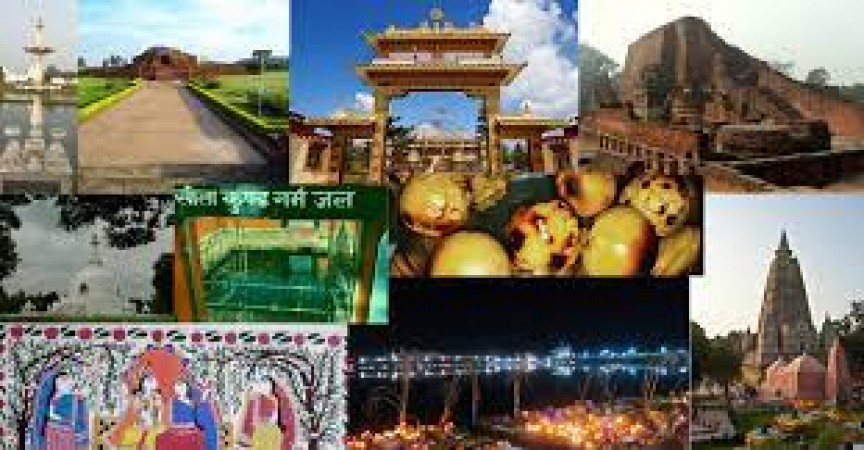
Indian art and culture have a rich and diverse heritage that spans thousands of years. From ancient sculptures and paintings to vibrant festivals and traditional performing arts, India's artistic expressions are a testament to its cultural richness and artistic prowess. This article provides an overview of Indian art and culture, exploring various art forms, historical contexts, and significant cultural elements.
Historical Overview-
Ancient Indian Art: Ancient Indian art dates back to the Indus Valley Civilization, which flourished around 2500 BCE. The period witnessed remarkable craftsmanship in pottery, seals, and terracotta figurines. The rock-cut caves of Ajanta and Ellora showcase magnificent murals and sculptures that depict the life and teachings of Buddha.
Medieval Indian Art: Medieval India saw the emergence of various dynasties and empires, each leaving its mark on the artistic landscape. The intricate carvings of the temples at Khajuraho, Konark, and Hampi showcase the architectural brilliance of the time. Miniature paintings from the Mughal era depict scenes from the royal courts and everyday life with exquisite detail and vibrant colors.
Modern Indian Art: The modern era brought a wave of change in Indian art, influenced by colonialism and the freedom struggle. Artists like Raja Ravi Varma played a crucial role in bridging traditional and Western art styles. The Bengal School of Art and the Progressive Artists' Group further contributed to the evolution of Indian art, embracing new techniques and exploring social themes.
Traditional Indian Art Forms
Classical Dance: Indian classical dances, such as Bharatanatyam, Kathak, Odissi, Kathakali, Manipuri, and Mohiniyattam, are deeply rooted in mythology and spirituality. Each dance form has its unique movements, expressions, and costumes, captivating audiences with its grace and storytelling.
Music: Indian classical music is known for its complex melodies, intricate rhythms, and improvisation. Two major genres, Hindustani (North Indian) and Carnatic (South Indian), have distinct styles and instruments. Instruments like sitar, tabla, veena, and flute add depth and richness to Indian music.
Theater: Indian theater encompasses a range of dramatic traditions, including Sanskrit drama, folk theater, and contemporary plays. The traditional art form of Yakshagana from Karnataka and the elaborate performances of Ram Lila during Navratri are examples of India's vibrant theatrical heritage.
Painting: Indian painting traditions span diverse styles, from the ancient cave murals to Mughal miniatures and Tanjore paintings. The colorful Madhubani art from Bihar and the intricate Pattachitra from Odisha are renowned for their storytelling and vibrant visuals.
Indian Sculpture: Indian sculpture showcases exquisite craftsmanship and spiritual symbolism. From the intricate stone carvings of ancient temples to the iconic statues of gods and goddesses, sculptors have captured the essence of divinity and human emotions in their creations.
Architecture in India-
Temples and Monuments: Indian architecture is renowned for its temple designs and monumental structures. The temples of Khajuraho, Brihadeeswarar Temple in Thanjavur, and the Sun Temple in Konark exhibit exceptional architectural brilliance, intricate carvings, and symbolic representations.
Mughal Architecture: Mughal architecture in India reached its pinnacle during the reigns of emperors like Akbar, Shah Jahan, and Aurangzeb. The Taj Mahal in Agra, the Red Fort in Delhi, and the Jama Masjid in Delhi are iconic examples of Mughal architectural grandeur, characterized by symmetry, arches, and ornate decorations.
Indian Textiles and Clothing: India has a rich tradition of textiles and clothing, known for its intricate weaves, vibrant colors, and diverse fabric styles. From the elegant silk sarees of Kanchipuram to the intricate embroidery of Kashmiri shawls, Indian textiles reflect the country's regional diversity and artistic skills.
Festivals and Celebrations: India is known for its vibrant and joyous festivals, which offer a glimpse into its cultural tapestry. Diwali, the Festival of Lights, celebrates the victory of light over darkness. Holi, the Festival of Colors, involves joyful celebrations with vibrant powders and water. Navratri, a nine-night festival, is dedicated to the worship of the divine feminine.
Indian Cuisine: Indian cuisine is a delightful blend of flavors, spices, and cooking techniques. Each region has its own culinary specialties, from the fiery curries of South India to the rich Mughlai dishes of the North. The use of aromatic spices like turmeric, cardamom, and cumin adds depth and complexity to Indian dishes.
Religion and Spirituality: India is the birthplace of several major religions, and spirituality permeates its cultural fabric. Hinduism, the largest religion in India, encompasses diverse beliefs and practices. Buddhism, Sikhism, and Jainism also have deep roots in the country, each with its own unique philosophies and rituals.
Indian art and culture are a testament to the country's rich heritage, creative expressions, and spiritual beliefs. From ancient sculptures and intricate architecture to vibrant festivals and traditional art forms, India offers a treasure trove of cultural experiences. Exploring the depth and diversity of Indian art and culture is a journey that unravels the essence of this incredible country.
Rishikesh: A Spiritual Haven by the Holy Ganges
West Indies banking on Sinclair's spin skills to challenge India